A temple that harmonizes natural wonders with profound spirituality, where every visitor is embraced by the warmth of faith and the healing power of nature.
Nestled in the serene Parvati Valley of Himachal Pradesh, Gurudwara Manikaran Sahib stands as a beacon of faith and healing. This sacred site is not just a place of worship; it is a sanctuary where spirituality intertwines with the breathtaking beauty of the Himalayas. Imagine a tranquil retreat where the devotion of pilgrims and the grandeur of nature come together in perfect harmony.
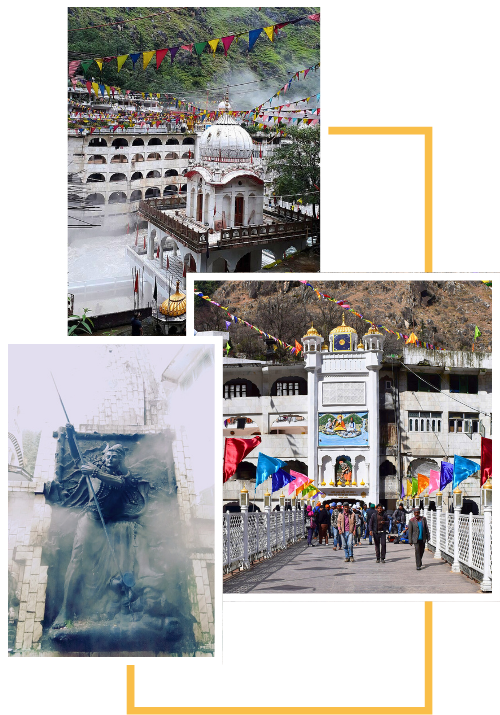

Open 24 hours a day.
Modest attire with head coverings is required as a sign of respect.
April to September offers pleasant weather, making these months ideal for a visit.
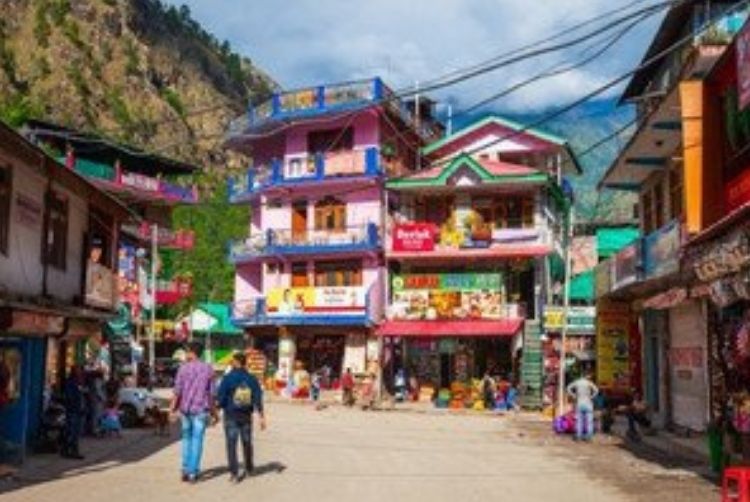
A quaint town just 4 km away, Kasol is a hub for travelers and offers a variety of dining and accommodation options.
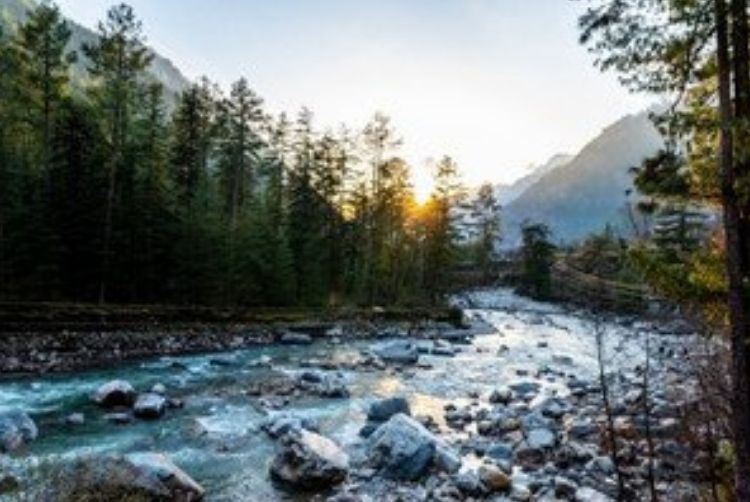
The river flows serenely past the Gurudwara, providing a picturesque backdrop for meditation and reflection.
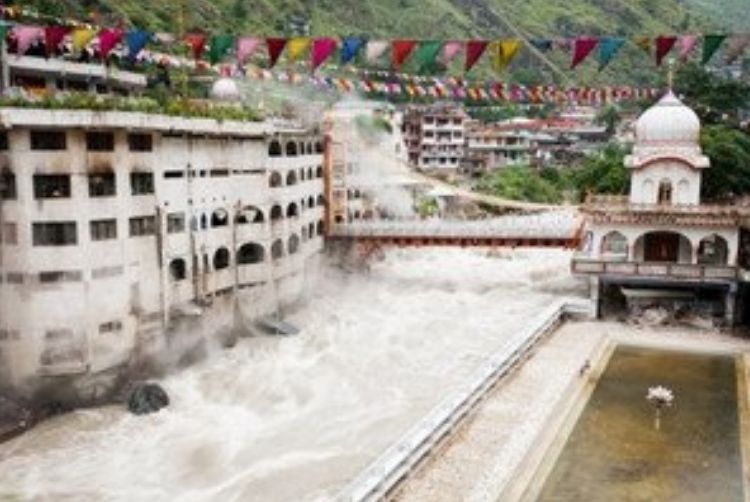
The natural hot springs at Manikaran are renowned for their therapeutic properties, believed to cure various ailments.
The natural hot springs attract pilgrims worldwide.
It is believed that Guru Nanak Dev created these hot springs by lifting a stone.
The Gurudwara is known for its langar (community kitchen), where free meals are served.

The Gurudwara is situated at amidst the majestic Himalayas.
Manikaran is a unique site of pilgrimage for both Sikhs, Hindus, and more.
Commemorates the visit of Guru Nanak Dev Ji.





One of the most remarkable features of Gurudwara Manikaran Sahib is its natural hot springs, believed to have miraculous healing properties. Legend has it that during a visit by Guru Nanak Dev Ji, his disciple Mardana was instructed to lift a stone, releasing the hot springs that continue to flow today. These springs, rich in minerals, are not just a natural wonder but a symbol of divine intervention, providing warmth and healing to countless pilgrims who visit the Gurudwara.
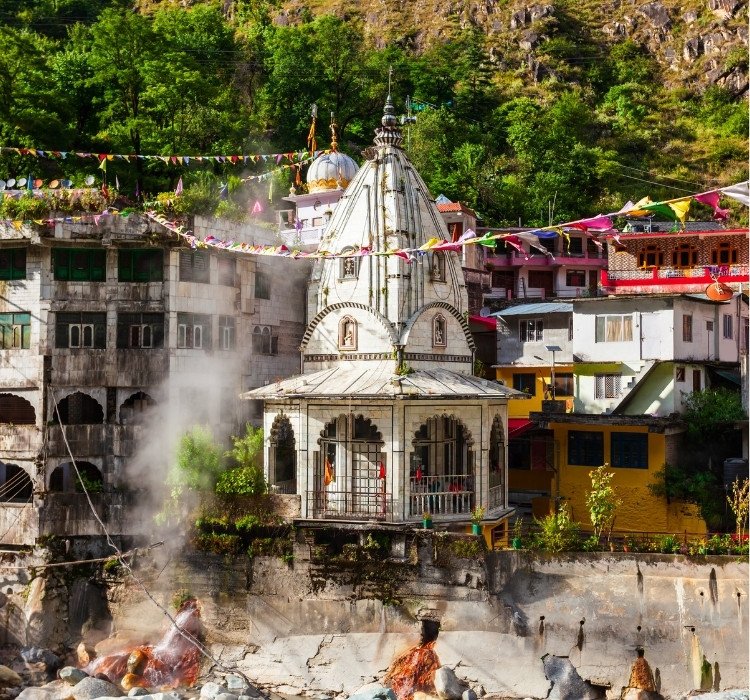
The Gurudwara is renowned for its langar, a communal kitchen that serves free meals to all, regardless of background. This tradition is deeply rooted in Sikhism’s principles of equality and selfless service. The food, cooked using the water from the sacred hot springs, is believed to carry blessings, making each meal a spiritual experience that nourishes both body and soul. The langar at Gurudwara Manikaran Sahib is more than a place to eat; it is a living embodiment of community and faith.
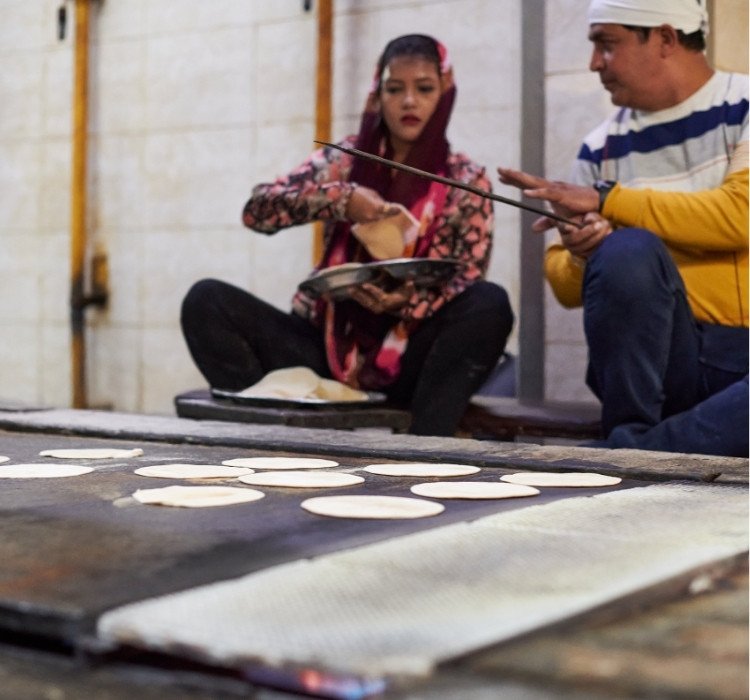
Manikaran holds significance not only for Sikhs but also for Hindus, making it a unique site of multi-faith pilgrimage. The village is believed to be the site where Lord Shiva and Parvati stayed for many years, according to Hindu mythology. This dual reverence underscores the Gurudwara’s role as a sanctuary where different faiths converge, symbolizing unity in diversity.

Gurudwara Manikaran Sahib’s architecture is a stunning fusion of Sikh and Hindu traditions, where faith and design meet in harmony. The domes, shimmering under the mountain sun, symbolize Sikh purity and divine grace, drawing the eyes upward to the heavens. The natural hot springs, a miraculous legacy of Guru Nanak Dev Ji’s visit, flow through the complex, offering both physical and spiritual renewal. Inside, the langar hall invites all visitors to share a meal in unity, reinforcing Sikh principles of equality and service. Nestled by the Parvati River, this sacred sanctuary is a testament to devotion, unity, and the divine interplay between nature and faith.

The sacred hymns of Guru Nanak, known as Shabads, resonate throughout Gurudwara Manikaran Sahib, infusing the space with spiritual serenity. These hymns, central to Sikh worship, are profound expressions of devotion, equality, and unity with the divine. Sung in the form of Kirtan (devotional music), they fill the Gurudwara with a sense of reverence, echoing the teachings of Guru Nanak that emphasize the oneness of God and the importance of selfless service. The melodic rhythms and lyrical depth of these hymns connect pilgrims with the divine, creating a spiritual atmosphere that transcends physical space, offering a meditative experience that uplifts the soul and reinforces the Gurudwara’s sanctity as a place of peace, harmony, and devotion.
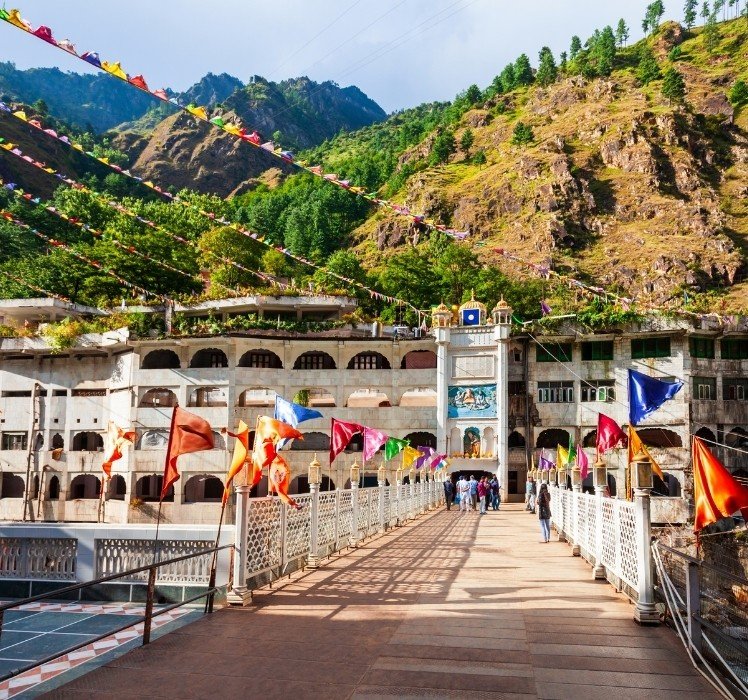
Many pilgrims come to Gurudwara Manikaran Sahib seeking not just spiritual solace but also physical healing. The waters of the hot springs are believed to cure various ailments, and countless devotees have shared testimonies of miraculous recoveries. This belief in the healing power of the Gurudwara’s waters continues to draw people from all walks of life, turning the site into a beacon of hope and faith.
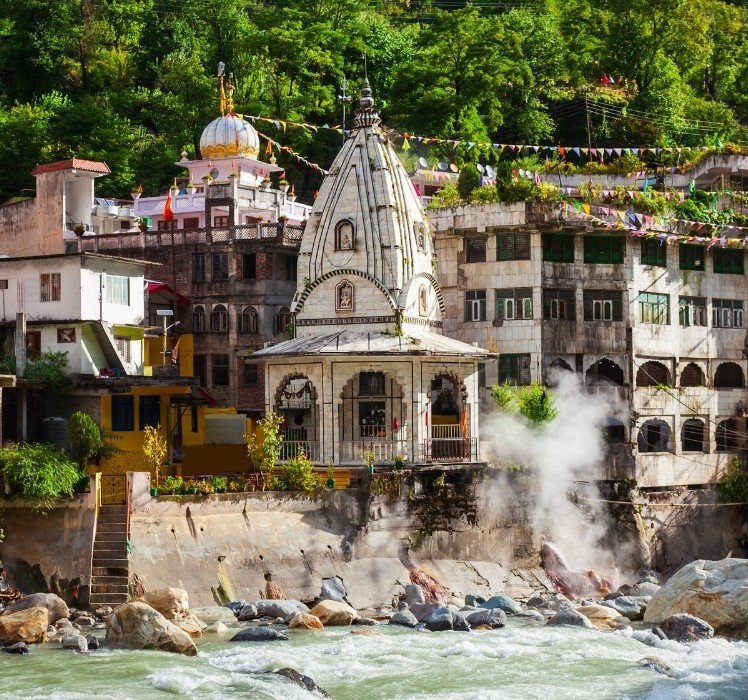
The story of Guru Nanak Dev Ji’s miraculous creation of the hot springs at Manikaran is recorded in the Bhai Bala Janamsakhi, a semi-legendary biography of the Guru. This account solidifies the site’s spiritual significance and draws attention to its healing waters, further establishing Manikaran as a place of pilgrimage for generations to come.
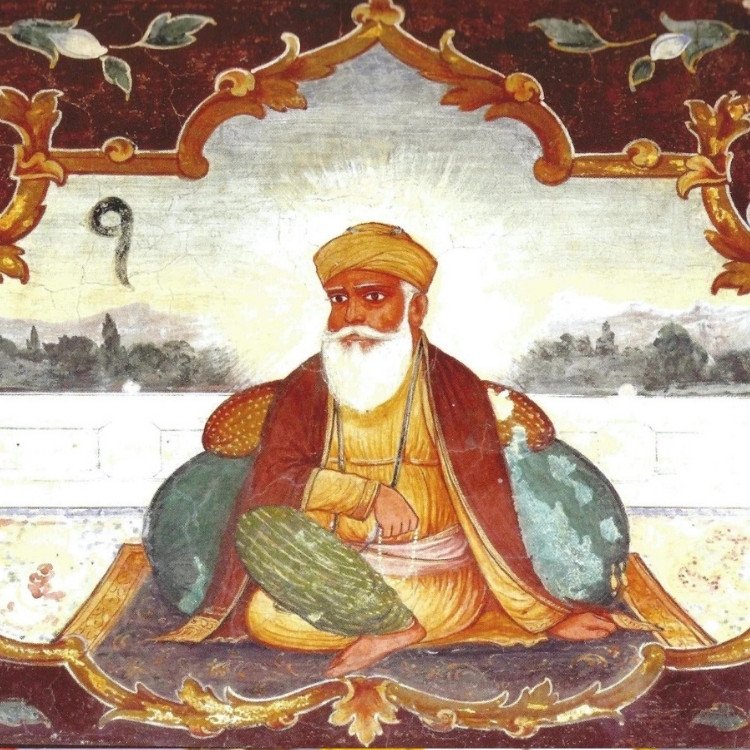
The story of Guru Nanak Dev Ji’s miraculous creation of the hot springs at Manikaran is recorded in the Bhai Bala Janamsakhi, a semi-legendary biography of the Guru. This account solidifies the site’s spiritual significance and draws attention to its healing waters, further establishing Manikaran as a place of pilgrimage for generations to come.
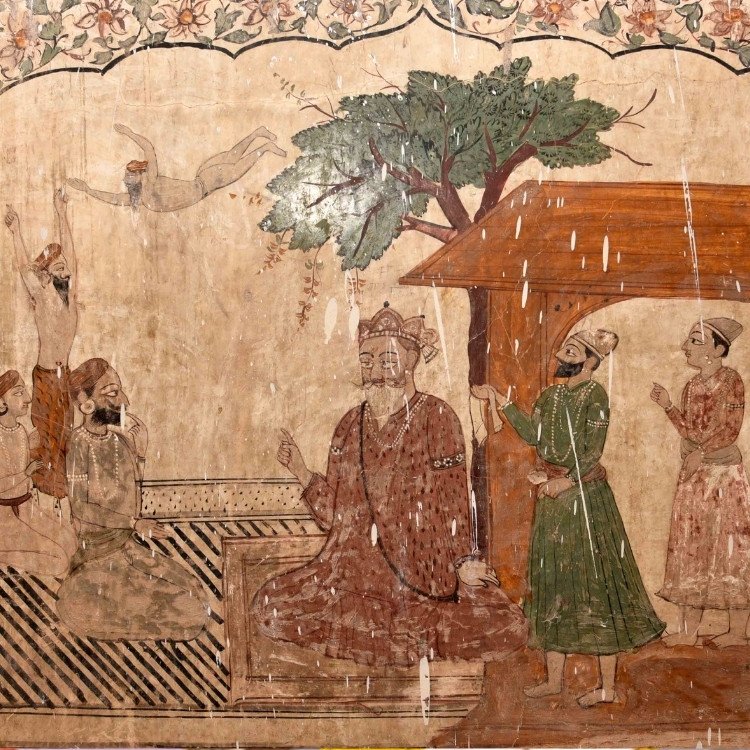
The story of Guru Nanak Dev Ji’s miraculous creation of the hot springs at Manikaran is recorded in the Bhai Bala Janamsakhi, a semi-legendary biography of the Guru. This account solidifies the site’s spiritual significance and draws attention to its healing waters, further establishing Manikaran as a place of pilgrimage for generations to come.

A small shrine is constructed to honor Guru Nanak Dev Ji’s visit to Manikaran. This humble structure marks the beginning of Gurudwara Manikaran Sahib’s evolution, serving as a spiritual haven for both Sikhs and Hindus. Over time, the shrine grows in prominence, reflecting the site’s increasing importance as a center of worship and pilgrimage for devotees from both faiths.
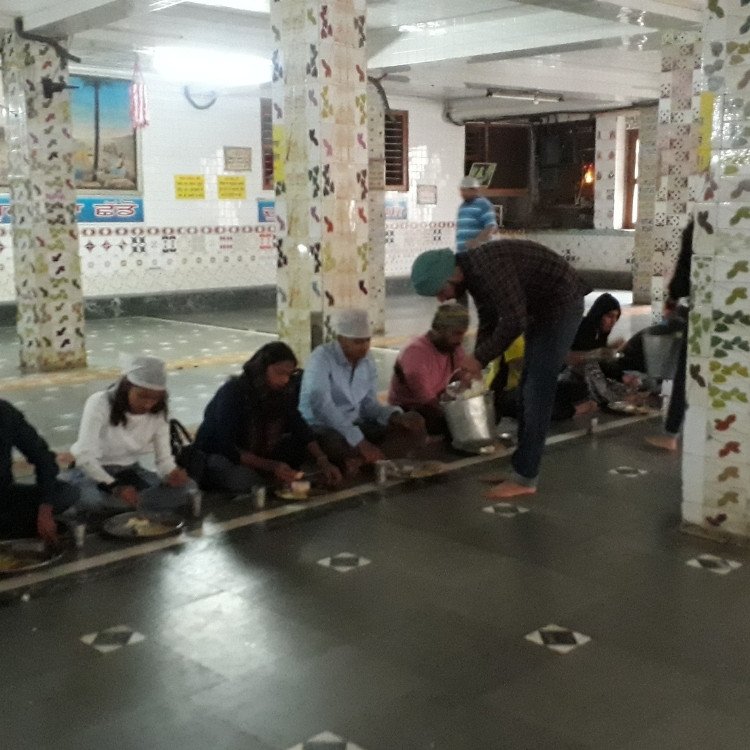
The site of Guru Nanak Dev Ji’s visit is rediscovered by Baba Narayan Hari, a Sikh saint, who initiates the construction of the Gurudwara. Despite facing opposition from locals, who repeatedly dismantled the structure, Baba Narayan Hari perseveres. Eventually, the resistance subsides, and he is allowed to continue building without further interference, laying the foundation for what would become the modern Gurudwara Manikaran Sahib.
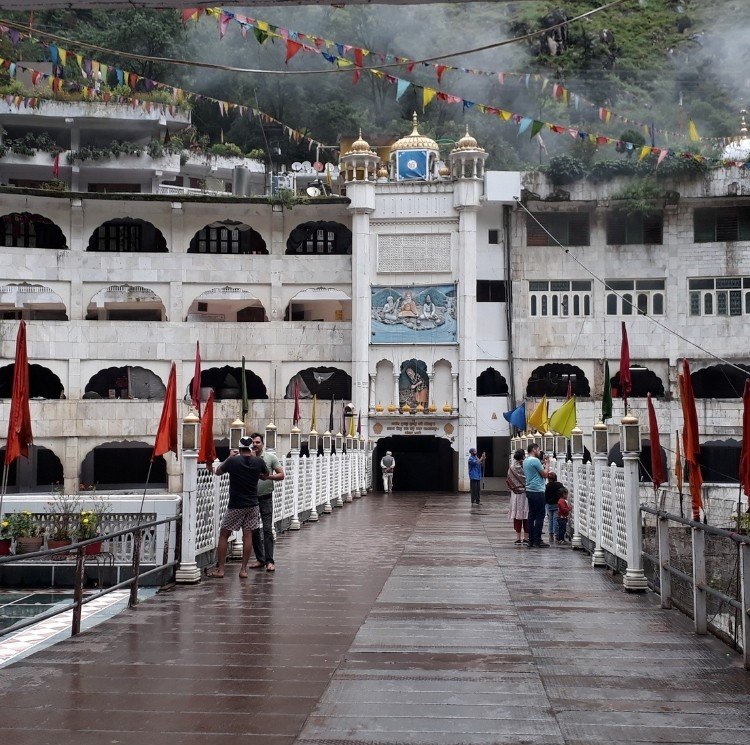
The site of Guru Nanak Dev Ji’s visit is rediscovered by Baba Narayan Hari, a Sikh saint, who initiates the construction of the Gurudwara. Despite facing opposition from locals, who repeatedly dismantled the structure, Baba Narayan Hari perseveres. Eventually, the resistance subsides, and he is allowed to continue building without further interference, laying the foundation for what would become the modern Gurudwara Manikaran Sahib.

Before any formal structure existed, pilgrims traveled to the sacred hot springs at Manikaran, drawn by the legend of Guru Nanak Dev Ji and the healing properties of the waters. Although Baba Narayan Hari has since passed, his legacy endures through the Gurudwara’s langar.
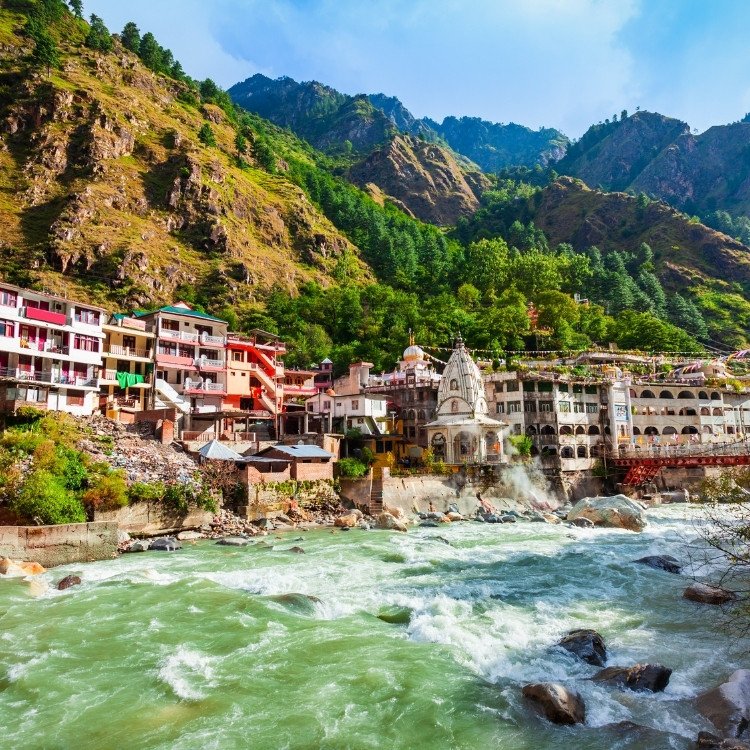
Cultural and Spiritual Preservation: The early 21st century has focused on preserving the cultural and spiritual heritage of Gurudwara Manikaran Sahib. Efforts have been made to maintain the historical significance of the site while ensuring that it continues to serve as a place of spiritual rejuvenation and communal harmony.
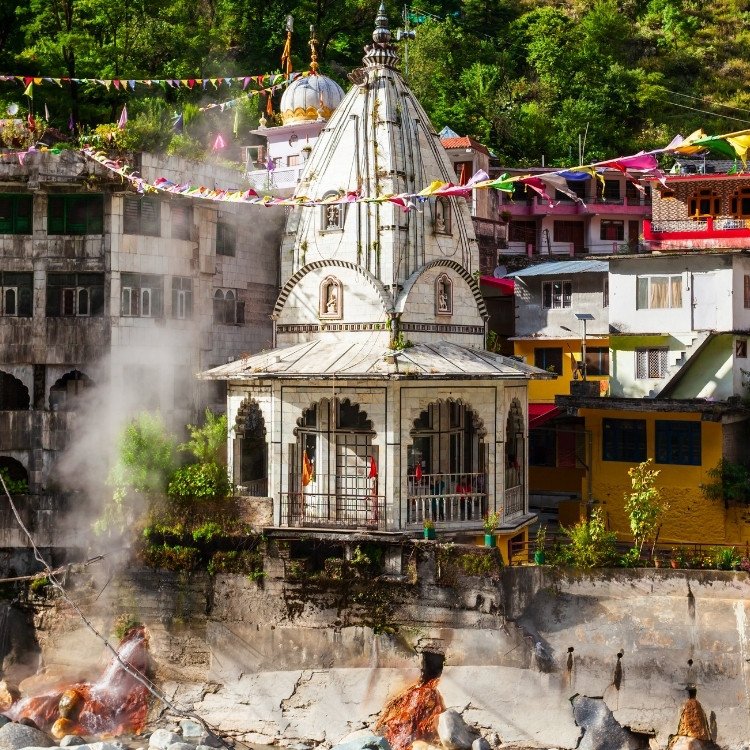
Cultural and Spiritual Preservation: The early 21st century has focused on preserving the cultural and spiritual heritage of Gurudwara Manikaran Sahib. Efforts have been made to maintain the historical significance of the site while ensuring that it continues to serve as a place of spiritual rejuvenation and communal harmony.

Continued Pilgrimage and Reverence: Today, Gurudwara Manikaran Sahib remains a beacon of faith and spiritual refuge. Pilgrims from across the world visit to experience the healing hot springs, participate in the langar, and connect with the site’s deep spiritual history. The Gurudwara continues to stand as a symbol of unity, healing, and the enduring power of faith.
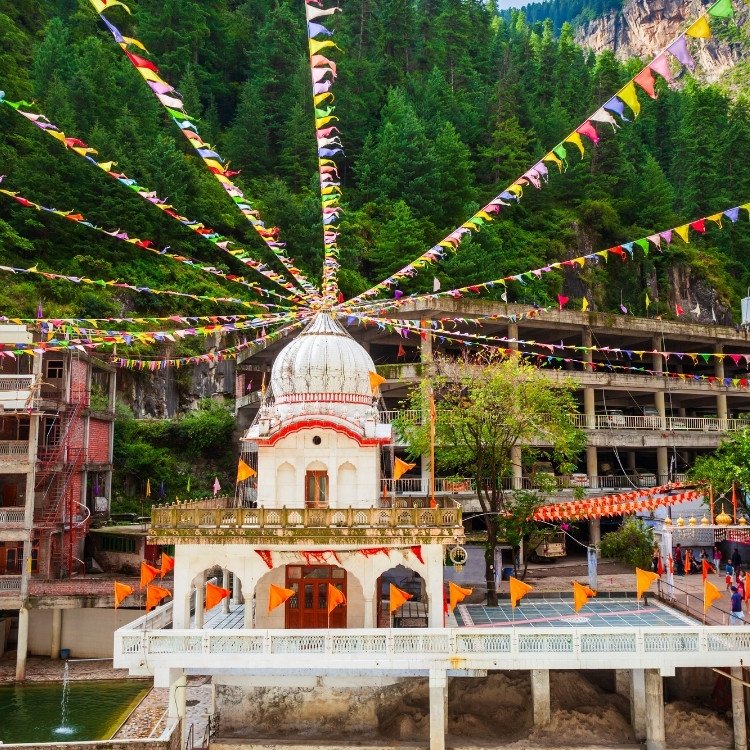

The history of Gurudwara Manikaran Sahib is deeply intertwined with the legend of Guru Nanak Dev Ji’s visit to the Parvati Valley in the early 16th century. During this journey, Guru Nanak Dev Ji and his disciple Mardana were said to have experienced a miracle that solidified the site’s spiritual significance. When Mardana expressed his hunger, Guru Nanak Dev Ji instructed him to lift a stone, revealing a hot spring beneath. This miraculous occurrence not only provided sustenance but also established the hot springs as a sacred element of the Gurudwara, believed to have healing properties. These springs have drawn pilgrims for centuries, turning Manikaran into a site of both spiritual and physical rejuvenation.

While no structure existed before the Gurudwara’s construction, the story of Guru Nanak Dev Ji’s visit to Manikaran and the miraculous hot springs was preserved in the Bhai Bala Janamsakhi, a semi-legendary biography of the Guru. This account ensured that the site remained significant to Sikh pilgrims, laying the groundwork for its rediscovery by Baba Narayan Hari. In the mid-1900s, Baba Narayan Hari established the Gurudwara, recognizing the spiritual importance of the site, which had long attracted pilgrims due to its sacred history.
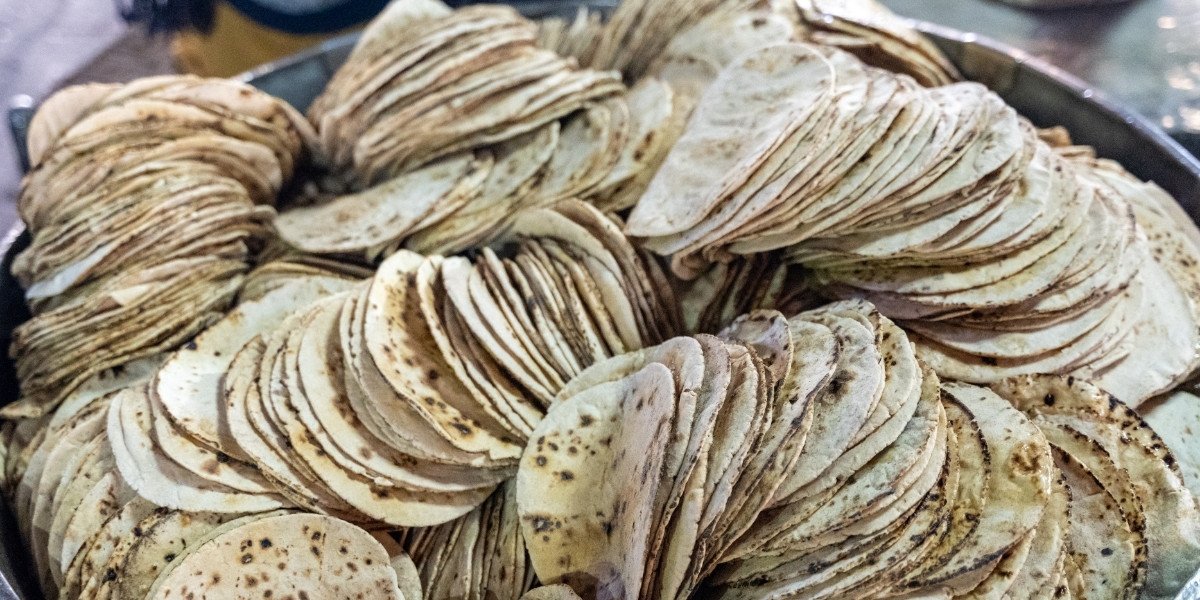
In 1940, Sikh saint Baba Narayan Hari rediscovered the springs which had provided the settings for Guru Nanak Dev Ji’s miracle. He began to build a gurudwara at the site, but his efforts were stymied by the locals, who would systematically dismantle his efforts. Despite this frustrating obstacle, Baba Narayan Hari continually responded to the locals with kindness, offering them water or tea. This patience and perseverance paid off when he was permitted to construct the gurudwara without continued interference, resulting in the magnificent structure that still stands today. He also established the langar, where free meals are served to all visitors. This tradition, rooted in Sikh values of equality and selfless service, became a central feature of the Gurudwara, reinforcing its role as a sanctuary for spiritual and communal nourishment.
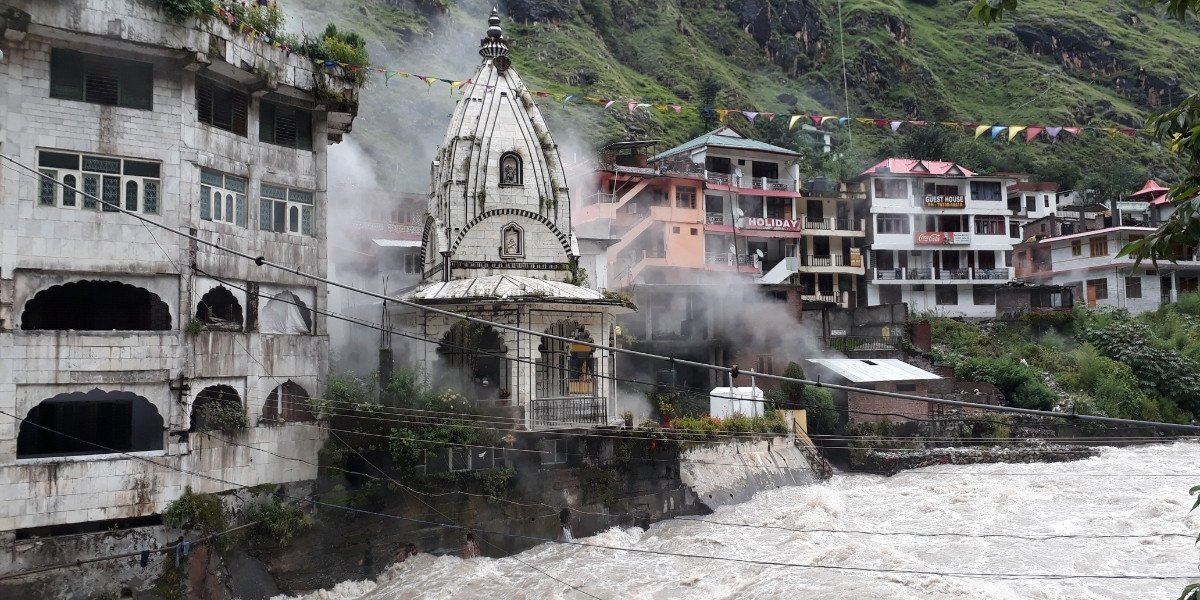
Baba Narayan Hari, the visionary behind the construction and restoration of Gurudwara Manikaran Sahib, passed away. His work in establishing the Gurudwara left a lasting spiritual and communal legacy, ensuring that the sacred site continued to flourish as a major pilgrimage destination. His contributions solidified Manikaran’s status as a place of deep religious significance for Sikhs, with its hot springs and devotional practices drawing visitors from around the world.
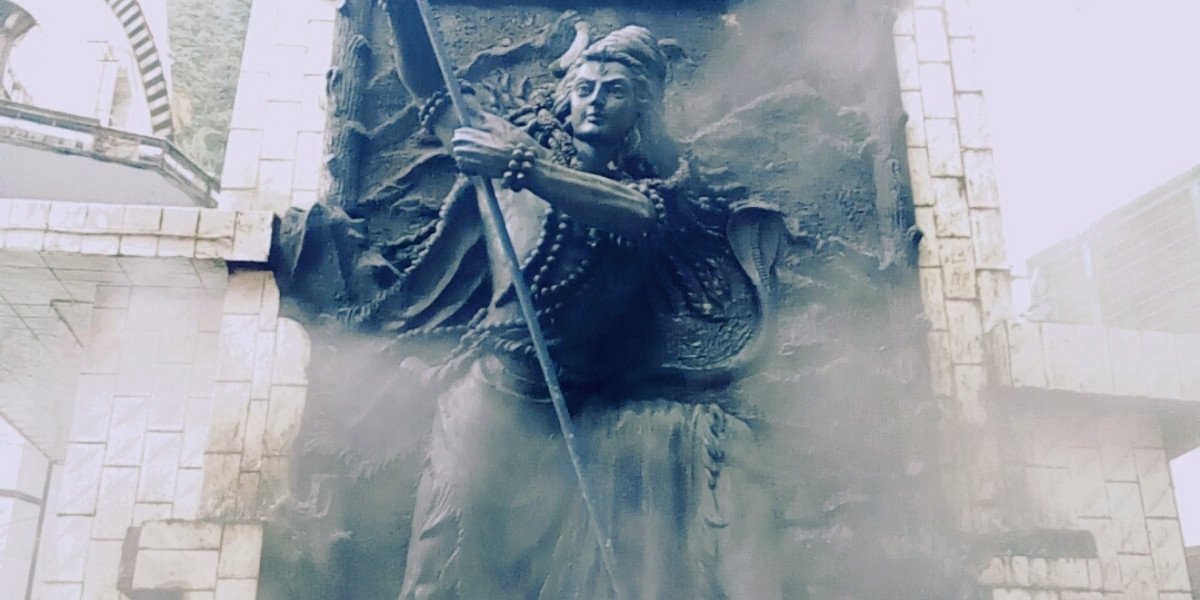
Gurudwara Manikaran Sahib and the Manikaran area stand out not only for their spiritual significance to Sikhs but also as revered sites for Hindus. This unique duality has made the Gurudwara a symbol of religious harmony, where the stories of Guru Nanak Dev Ji coexist with the legends of Hindu deities like Shiva and Parvati. This shared reverence underscores the Gurudwara’s broader significance as a sanctuary that transcends individual faiths, offering a space for spiritual reflection and unity.
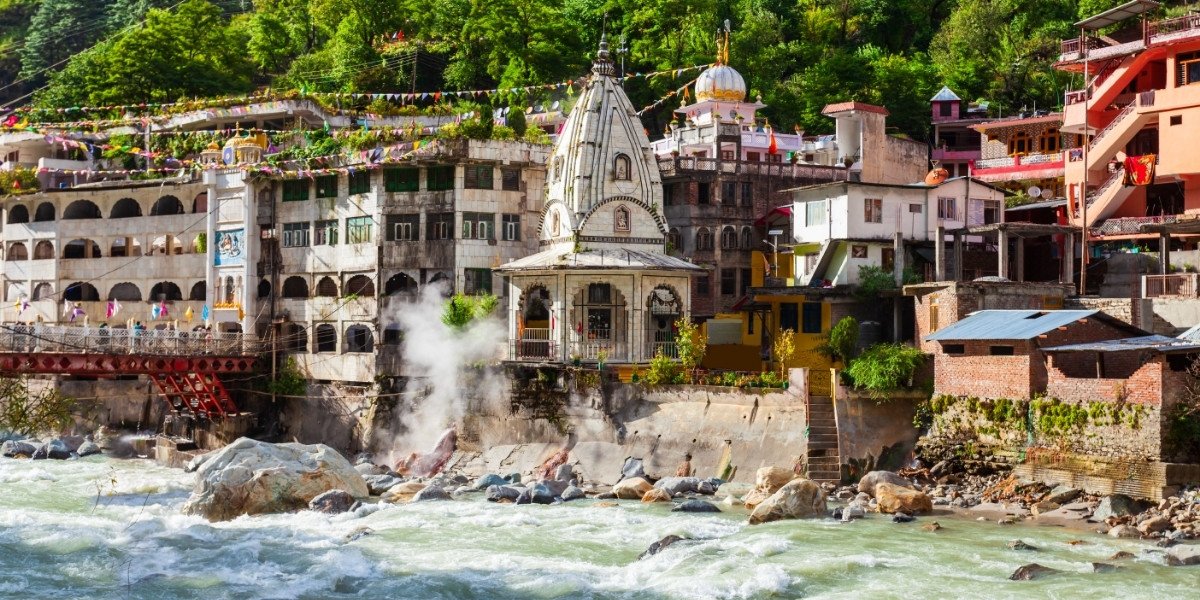
Today, Gurudwara Manikaran Sahib continues to attract pilgrims from around the world, each drawn by the site’s rich history, the promise of spiritual renewal, and the healing waters of its hot springs. The Gurudwara remains a living testament to the power of faith and the enduring legacy of Guru Nanak Dev Ji’s teachings. As the site evolves to meet the needs of contemporary worshippers, it retains its essence as a sanctuary where divine intervention and human devotion intersect.
Contact Us
Copyright © 2025 Temples.org. All rights reserved.